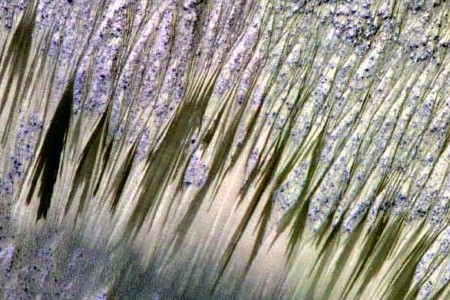May 13, 2020 – Two days ago this blog site achieved a milestone, its 3,000th posting and I didn’t even notice. I want to thank the tens of thousands of readers who continue to inspire me on this writing journey focused on science and technology discovery. And for those who have added their ideas and content to this site as guest authors, I salute all of you. This has been a 10-year journey so far and I plan to keep it going considerably longer because so much discovery lies ahead in this century. If I make it to the mid-century mark, I expect I will see many exciting technological and scientific breakthroughs between now and then. So please keep returning to this site and I promise not to disappoint.
The debate about Martian habitability is pretty much a done deal. Mars was once habitable, but the Red Planet today is a very different environment from 4 billion years ago. The evidence that free-standing water in the forms of rivers, lakes, and seas has been revealed by the cameras on Martian orbiters, and by landers and rovers examining and traversing the Martian terrain.
The Curiosity Mars rover was sent to the Gale Crater on Mars to look for evidence of surface water in Mars’ past. The crater itself probably contained a lake for a number of years. The nature of that water legacy has now been studied for several years as the rover continues to ascend through the layer of rock formations that form the crater surface.
Evidence in imagery from orbiters has shown changes to the Martian landscape that suggest water is present on the surface from time-to-time in the form of striated channels called lineae, that run down escarpment and crater walls. But in the thin atmosphere of Mars, the presence of liquid water is transient at best, not lasting much more than an Earth hour before evaporating.
When the Phoenix lander sampled the Martian regolith it discovered salty ice just under the surface. Mars appears to have a fair amount of this type of subsurface water extending from the equator to near the poles. Described as stable brines, these water sources “fall outside the known tolerances for terrestrial life” states a new paper published this week in Nature Astronomy.
The authors describe Martian brines as filled with perchlorate, a chemical hostile to Earth’s life. Perchlorate was discovered by Phoenix when it dug into the Martian regolith. It is a chlorine compound that should tell you all you need to know about its antimicrobial characteristics. And although the brine is widely distributed in the subsurface regolith, the low atmospheric pressure and extreme cold temperatures mean Mars doesn’t have an atmospheric water cycle similar to here on Earth. The study concludes that Earth microbes inadvertently brought by robotic landers, or future human explorers would lead to alien contamination of the Martian surface, or be a threat to native life.
We have a limited frame of reference when we search for life on alien surfaces. The only models we know come from the evolution of life here on Earth. We know DNA and RNA, and the most exotic life we find here lives by smokers and vents in the deep ocean, and in thermal and highly acidic geothermal pools found on the surface. The chemistry, pressures, and extreme temperatures at these locales, until a few decades ago, would have had us conclude they were uninhabitable for terrestrial life. But now we know life finds a way.
The presence of perchlorate, therefore, may not be a game-changer in the search for alien life on Mars. Four billion years ago it appears Mars was a very different planet. The atmosphere was thicker. The surface of the planet appears to have had an ocean covering nearly half of the northern hemisphere. The Mars of that past may have seen life evolve. And as we have seen here on Earth, life which has gone through several mass extinctions has found a way to persist and evolve whether it lives tens of kilometers deep underground within rocks, in the abysmal reaches of our ocean, the ice fields of Antarctica, or at the highest peaks in the Himalayas.
Life that existed on Mars, therefore, may have found its own way to persist in what we call here on Earth extremophiles, well adapted to the Red Planet’s evolving harsh environment. So before we humans take our first footfall on that surface, we need our robot explorers that we send to the surface to ensure we will not be introducing alien life to life that has existed on the Red Planet for billions of years. If there are Martians they will certainly be exotic. Recognizing them will be a big challenge. Coexisting should be the desired outcome.








